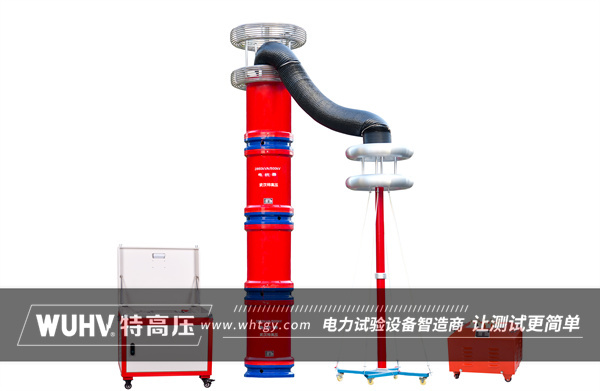The series resonanceunder Wuhan UHV can help many power workers conduct various power tests more conveniently.

The difference between inductance and capacitance is mainly reflected in the following aspects:
Definition and Structure:
Inductance: Inductance refers to the alternating magnetic flux generated inside and around a conductor when current passes through it, and the phenomenon in which this changing magnetic flux in turn generates induced electromotive force in the conductor. Inductance is composed of wires wound around magnetic materials, and when current passes through the wires, a magnetic field is generated.
Capacitor: Capacitor is the ability to accommodate an electric field, and any electrostatic field is composed of many capacitors. A capacitor is composed of two electrical conductors that are close to each other and filled with an insulating medium, forming a capacitor as a whole.
Function and Application:
Inductance: Inductance can convert circuits into magnetic energy and release it at the appropriate time to convert it into circuits. Inductors can filter, oscillate, delay, and resonate circuits by passing through DC and AC resistors. Specific applications include signal filtering, noise filtering, electromagnetic wave interference suppression, and current stabilization. Inductors are commonly used in scenarios such as circuit intelligent control, boost and buck, signal filtering, etc., such as power supplies, transformers, motors, etc.
Capacitor: The main functions of a capacitor include charging, discharging, blocking direct current, and conducting alternating current. Capacitors play a role in energy storage, filtering, bypassing, coupling, tuning circuits, energy conversion, and control circuits in circuits. Capacitors are widely used in various electronic devices, such as power supplies, amplifiers, radios, etc.
Impedance characteristics:
Inductance: At the resonant frequency, the impedance of inductance and capacitance is equal, exhibiting pure resistance. The power supply, voltage, and current are in phase, with reactance X being 0 and impedance Z and resistance R being the same.
Capacitor: The impedance of a capacitor is inversely proportional to frequency, meaning that as the frequency increases, the impedance of the capacitor gradually decreases.
Current and voltage characteristics:
Inductance: The current on an inductor is gradual because the self induced electromotive force hinders the change in inductor current. The current of an inductor cannot suddenly change, but the voltage can suddenly change (such as an arc). Inductance stores energy in the form of current.
Capacitor: The voltage on the capacitor cannot suddenly change, but the current can suddenly change (such as surges). Capacitors store energy in the form of voltage.
Units and Parameters:
Inductance: The unit is Henry (H), and common inductance units include uh, mh. Characteristic parameters include inductance value, inductance coefficient, quality factor, etc.
Capacitance: The unit is Farad (F), and common capacitance units include uF, pF, etc. The characteristic parameter is mainly capacitance, which represents the ratio of the charge on a conductive plate to the voltage between two plates.
Symbols and representations:
Inductance: The symbol is L.
Capacitor: The symbol is C.
In summary, there are significant differences between inductors and capacitors in terms of definition, structure, function, impedance characteristics, current and voltage characteristics, units and parameters, and symbols. These differences enable them to play their unique roles in circuits and are widely applied in different electronic devices and systems.



















